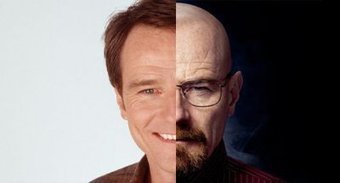 Your new post is loading...
 Your new post is loading...
Shadow work can be done in a wide variety of ways, including reflection, meditation or journaling.
There is no right way to do this vulnerable work, the key thing is you use a practice that enables you to be profoundly honest with your shadow, explore it with perspective and transcend it in a generative way.
One practice we particularly like is the 3–2–1 shadow process developed by Diane Hamilton. Its called the 3–2–1 Process because it “uses shifts in perspective as a way of identifying and integrating shadow material. 3–2–1 refers to 3rd-person, 2nd-person, and 1st-person”. This practice has 3 parts.
Face it — Locate the shadow within your mind and body. Don’t judge it, just be mindful of it and look at it from every angle in the 3rd person.
Talk with it — Ask your shadow, why are you here in the 2nd person. What do you want to do with me?
Be it — Switch roles, become your shadow (1st person). Speak back to yourself by embodying your shadow.
We are whole people living in whole contexts. Opening up to the gifts of being whole — both our light and our shadow — is vital to living life rich with wellbeing and wholeness.
Via David Hain
So this article, Part 3, is an answer to the organizational paradox of why good people become evil bosses. Here are three archetypal stories of those who “break bad” into Machiavellianism: the hard-driving leader, the conniving executive, and the striving employee. Take a walk through the darkness with me…
Via David Hain
|
“Asshole” is not a term I use clinically/scientifically, but people use it commonly because it provides a shared understanding of something you “know when you see it.” So my goal here is to clearly categorize a pattern that you probably intuitively recognize, in a way that’s more insightful.
Clinically, there are three distinct types of socially aversive personalities, known as the “Dark Triad”: psychopathy, narcissism, and Machiavellianism. These traits are dimensional in a sense that all of us fall somewhere on the spectrum, but only those who are very high in the trait can be considered diagnosable with a full-blown personality disorder. If you’re curious, you can take the online Short Dark Triad personality test to see at what percentile you exhibit these three traits, compared to the general population.
The key to understanding the Dark Triad is that while all three share a callousness toward others that encourages manipulativeness, they do so for distinct reasons. Psychopaths are driven by short-term tangible rewards, and engage in reckless, antisocial behavior to get it. Machiavellians are fueled by long-term tangible rewards and will strategize schemes to get them. Narcissists are motivated by whatever boosts their ego, whether tangible rewards or simple praise that validates their idealized self-image.
Via David Hain
|



 Your new post is loading...
Your new post is loading...









